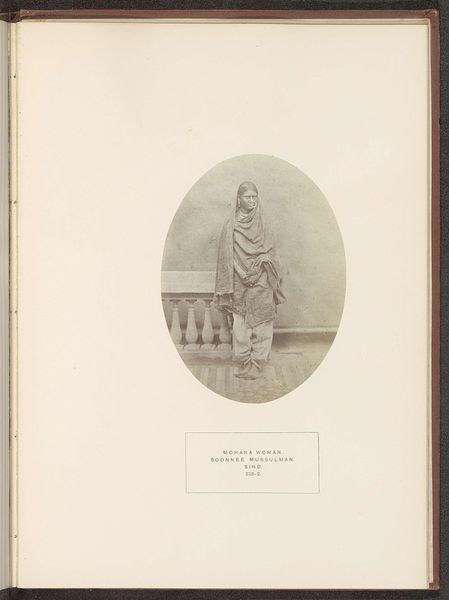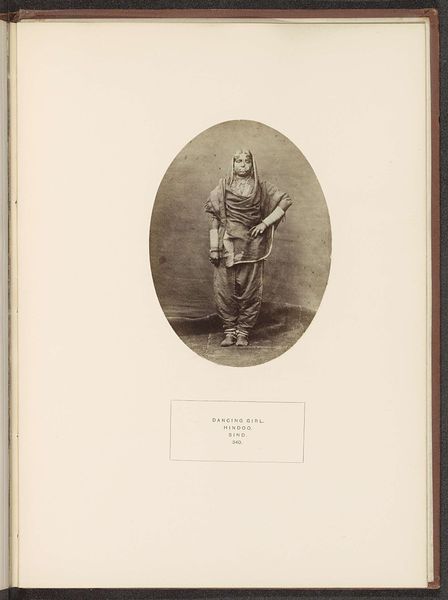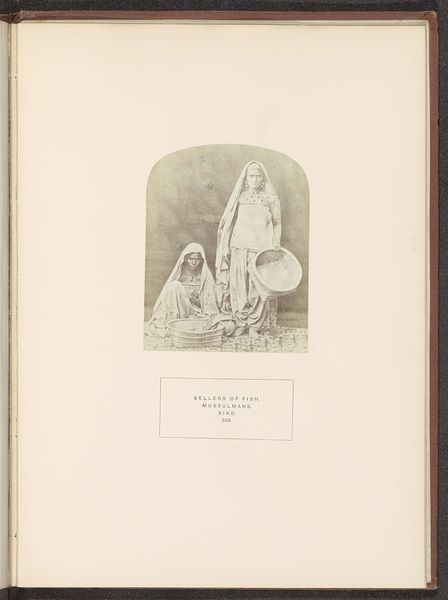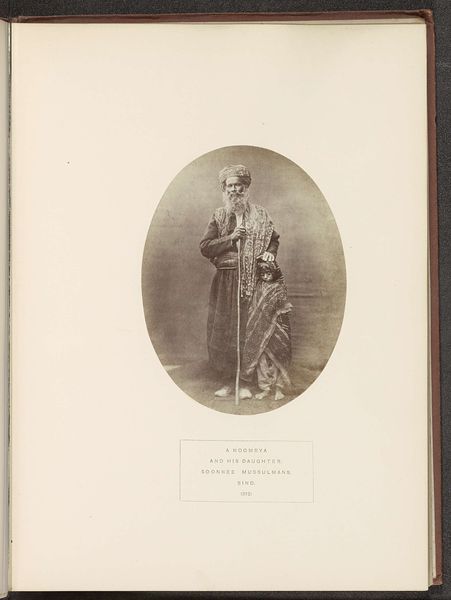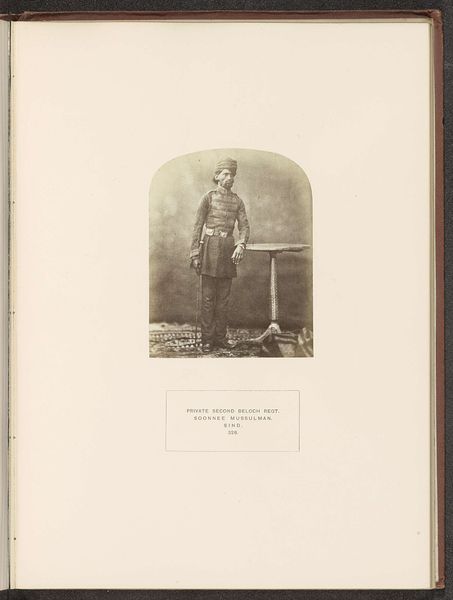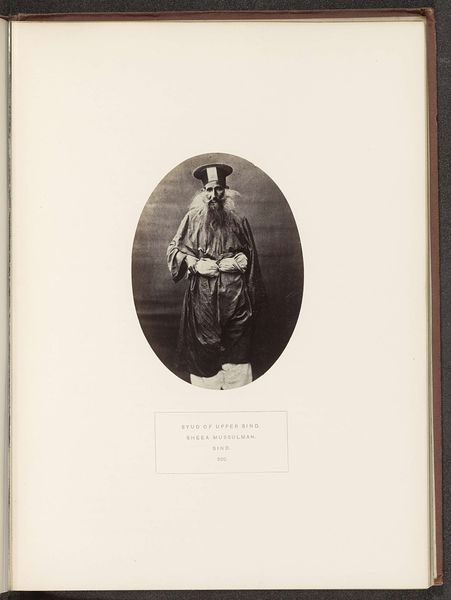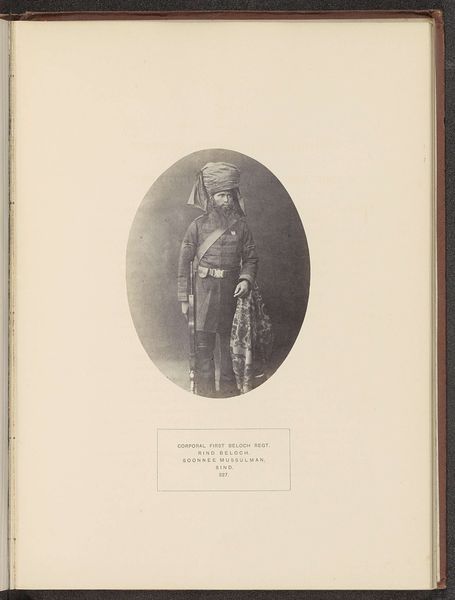
Portret van een onbekende vrouw met een hoofddoek uit Sindh before 1872
0:00
0:00
photography, albumen-print
#
portrait
#
figuration
#
photography
#
orientalism
#
islamic-art
#
albumen-print
Dimensions: height 116 mm, width 87 mm
Copyright: Rijks Museum: Open Domain
Editor: We're looking at an albumen print, believed to be before 1872, by Henry Charles Baskerville Tanner. It's titled "Portret van een onbekende vrouw met een hoofddoek uit Sindh"—a portrait of an unknown woman with a headscarf from Sindh. The image is quite striking in its simplicity and the subject's gaze. How do you interpret this work, especially considering the time it was made? Curator: This albumen print is fascinating when viewed through a historical lens. The late 19th century was a period of intense colonial activity, and images like this were often produced within the context of Orientalism. This artistic and intellectual movement exoticized and, at times, misrepresented Middle Eastern, Asian, and North African cultures. The woman's "otherness" becomes the focus. How do you think the photographer's potential biases might affect our understanding? Editor: That's interesting. So you're suggesting that rather than a straightforward portrait, this image participates in a broader narrative of colonial representation? I hadn't considered that the photographer, perhaps unconsciously, was framing her through that lens. Curator: Precisely. And beyond that, the institutional framing of this work—the very act of placing it within a museum context—further shapes its meaning. We need to consider the power dynamics at play when a Western photographer captures the image of a woman from Sindh, and then that image is displayed for a Western audience. Is the portrait attempting to understand or is it simply observing? Editor: That really gives me a lot to think about. It’s not just about the image itself, but about how it’s been viewed, interpreted, and displayed over time. It shifts how I view the agency, or lack thereof, that the woman in the portrait has. Curator: Indeed. It highlights the complexities of cultural representation and the lasting impact of colonial legacies on art history.
Comments
No comments
Be the first to comment and join the conversation on the ultimate creative platform.
